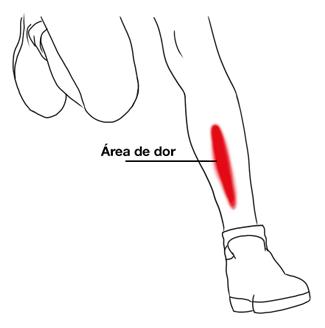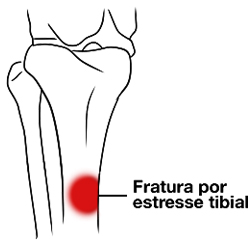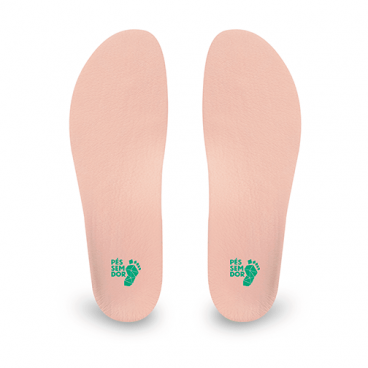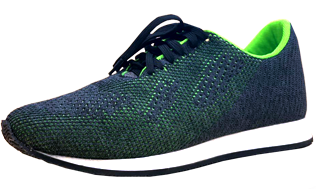Shin Splints
Shin splints, also known as periostitis of the tibia, is an injury that affects the tibia, the shin bone. This injury is caused by overuse (excess load) and is related to running and sports practices with repetitive trauma, according to the study “Medial tibial stress syndrome: conservative treatment options”. It is an inflammation that acts on the tibial periosteum (the membrane surrounding the bone) and appears when the musculature and structures around the tibia do not support the imposed load.
In addition to tibial periostitis, shin splints can also be called Medial Tibial Stress Syndrome, a particular condition for physical activity practitioners, especially runners.
The periosteum is a dense, vascularized, fibrous, innervated membrane surrounding the bones. In the case of shin splints, the periosteum of the tibia becomes inflamed, causing pain, swelling, and local redness. The main functions of the periosteum are: to protect and nourish the bones; attach muscles to bones; assist in new cell production for healing fractured bones and replacing damaged cells; involve nerves and blood vessels that take nutrients to the bone.
Shin splints are associated with how the body cushion the impact of the activity performed and the recovery time before the next stimulus. If the individual does not have good running mechanics (good alignment), the load will be greater, as will the chance of developing inflammation and pain. In addition, it may be related to other factors, such as excessive physical activity, the practice of sports on hard terrain, lack of muscle strengthening, and inadequate shoes, among other problems.

In chronic and more severe cases, the person may present a stress fracture of the tibia, aggravating the issue and making rehabilitation even more difficult.
CAUSES
The leading causes of shin splints are related to running mechanics, training load, and repetitive trauma, such as:
– Sudden start of physical activity, with high intensity, the muscles must be prepared for the training volume;
– The amount of experience in the sport. The longer the individual performs that activity, the lower the risk of injuries, such as shin splints;
– Practicing sports on hard terrain: running on hard terrain is much more harmful to the tibia than running on softer terrain. Concrete, for example, is many times more damaging to the tibia than running on asphalt. However, asphalt is more severe than running on dirt. The grass is the softest surface and significantly decreases the risk of shin splints;
– Excessive pronation: occurs when the foot and ankles are displaced towards the medial part, causing misalignment and collapse of the arch during running, overloading the structures (bone and muscle) of the shin region;
Pronated walking causes misalignment of the bone structure.
– Anterior Compartment Syndrome: due to excessive exercise, there is an increase in pressure in the musculature and thus, leads to a decrease in the blood flow of the muscles and nerves, preventing their oxygenation and nutrition and causing the appearance of pain;
– Posterior Tibial Tendinitis: this type of injury is caused due to excessive effort (overuse), widespread in people who practice running. Tibialis posterior tendinitis causes pain behind the shin, where the tendon and muscle are located. The pain happens due to inflammation and degeneration of this tendon and can be confused with shin splints.

– Anterior Compartment Syndrome: due to excessive exercise, there is an increase in pressure in the musculature and thus, leads to a decrease in the blood flow of the muscles and nerves, preventing their oxygenation and nutrition and causing the appearance of pain;
– Posterior Tibial Tendinitis: this type of injury is caused due to excessive effort (overuse), widespread in people who practice running. Tibialis posterior tendinitis causes pain behind the shin, where the tendon and muscle are located. The pain happens due to inflammation and degeneration of this tendon and can be confused with shin splints.
SIGNS AND SYMPTOMS
Cases of shin splints produce pain in the front of the leg, in the shin bone. It is greater at the beginning and end of the workout because the pain tends to go away as soon as the body warms up and the blood flow increases. However, over time, the accumulation of overload in the shin leads to severe pain. In the most severe cases, pain may be present even at rest. The patient usually also has the following:
– Pain in the calf muscles;
– Redness and temperature increase in the area;
– Pain on palpation of the tibia;
– Difficulty walking.
In the most severe cases, the patient may have a tibial stress fracture, a micro-injury to the tibial bone due to excessive impact, and may even generate a total or partial fracture of that bone. This injury accounts for 10% of all sports fractures.

PREVENTION AND TREATMENT
The individual needs to wear suitable shoes (which maximize impact cushioning, according to the activity performed) and equipment (such as knee pads and ankle pads that help with alignment), in addition to having control over loads and training mechanics, always with a professional skilled. In addition, it is crucial to take measures such as:
– Physical therapy, which will improve symptoms and correct running mechanics and misalignments;
– Reduce the load and frequency of training. Depending on the case, the exercise can be suspended;
– Use Feet Without Pain insoles.
FEET WITHOUT PAIN® CUSTOM INSOLES AND SHOES FOR SHIN SPLINTS
Feet Without Pain custom insoles can correct misalignments, such as excessive pronation, significantly improving load cushioning. In addition, it offers arch support with the correct height for each foot, which will not allow it to collapse quickly during impact activities, reducing the burden on the muscles and bones of the foot and leg.

On the other hand, bespoke shoes are made under the perfect measurements of your foot. With this, he is highly stable and comfortable, which considerably helps those suffering from shin pain. In addition, we can print the custom-made shoes’ soles in 3D, providing ideal firmness and softness.

Unisex Sneakers Feet Without Pain | You can choose from over 20 men’s and women’s shoe models.
The custom insoles and shoes are made with 3D technology and millimetric digital precision after a free foot, ankle, and knee evaluation with our specialists at one of our branch offices. Check some of their benefits for your feet below:
- Elimination or reduction of pain;
- Injury prevention;
- Increased comfort;
- Perfect fit;
- Standing longer without pain or discomfort;
- Prevention of pathologies progression;
- Improved impact absorption;
- Improved sports performance.
TIPS AND CURIOSITIES
– Putting ice on the site reduces pain and helps control inflammation;
– Practice proprioceptive exercises. Initially, balance on one foot thrice for 30 seconds daily, always with nearby support (to help with balance). While on one leg, try to “lift” the arch of the foot;
– Massaging the calves relieves muscle pain, relaxes them, and can reduce the traction of the periosteum;
– Wear compressive stockings. They improve blood return and reduce inflammation at the site;
– Use anti-inflammatories (with medical prescription) to control inflammation and pain. But they must be allied to the treatment of the cause of the pathology;
– Perform flexibility, strength, balance, and leg muscle stretching exercises;
– Always remember to stretch before and after the race;
– Only return to the practice of sport when you are rehabilitated. Returning prematurely may worsen the injury.
FREQUENTLY ASKED QUESTIONS (FAQs)

How to purchase your custom shoe or insole?
It’s fast and easy! Schedule a free evaluation of your feet with our specialists to buy your custom-made shoe.
Call, send a message to WhatsApp at 4003-8883, or visit: www.pessemdor.com.br/agendamento.
How does the evaluation work?
Upon arriving at a Feet Without Pain branch office, you will be received by a foot, ankle, and knee specialist, who will then fill out a registration form and ask some questions about your pain. Next, the assessment of the feet begins.
The specialist will examine your feet to understand your foot pains and complaints. Then, using the high-precision 3D scanner device, the specialist captures your feet’ measurements.
We are the only company with a 3D scanner for designing custom shoes. First, with the measurements of your feet, a mold is created using 3D printers, and after that, we start making your shoe.
How long does it take for the shoes and insoles to be ready?
Feet Without Pain produces custom-made shoes in up to 3 days; then, they are sent to your home free of charge!
Is the evaluation free?
Our assessment is completely free! We perform a complete analysis of your feet and legs, and you pay nothing for it!
Do we accept medical insurance?
We do not work with insurance because our assessment is completely free! But you can check if your plan somehow refunds you regarding the shoes!




